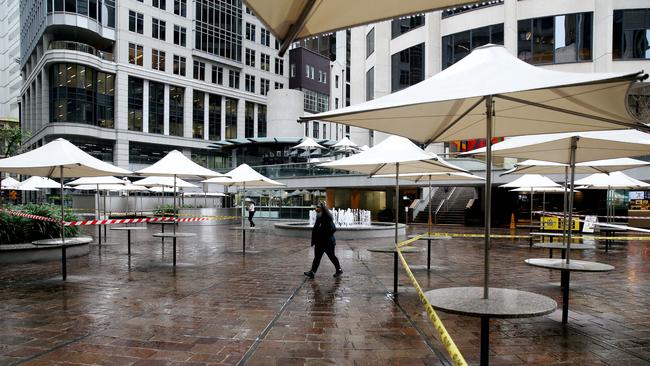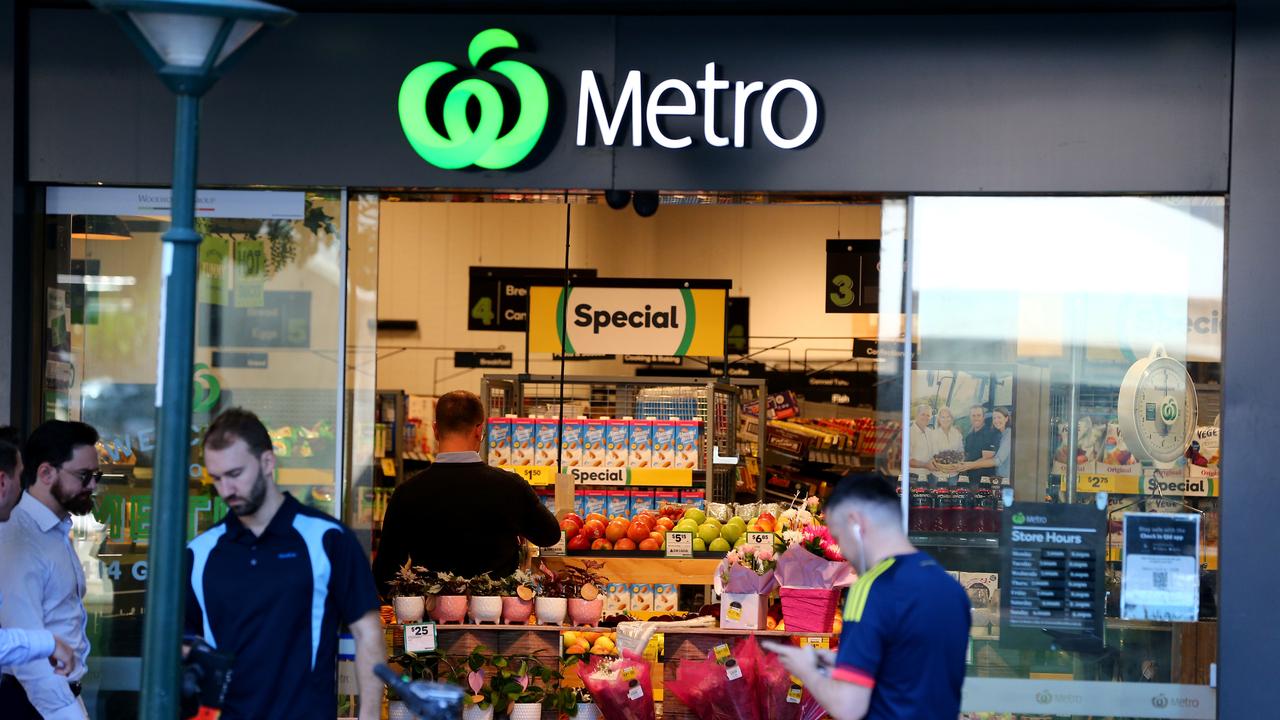GDP forecasts up in air as Sydney Covid lockdown bites
The Reserve Bank’s cautious approach to withdrawing monetary policy stimulus looks set to be vindicated by the worsening outbreak of the Covid Delta variant.

Business
Don't miss out on the headlines from Business. Followed categories will be added to My News.
The Reserve Bank’s cautious approach to withdrawing monetary policy stimulus looks set to be vindicated by the worsening outbreak of the Covid Delta variant in Sydney and Melbourne.
Even as the consumer sentiment snapshot taken by Westpac earlier this month showed that a slump in NSW caused by Covid restrictions was more than offset by rebounds in Victoria and Western Australia, economists were gauging the impact of what’s now promises to be “at least” a five-week lockdown of Greater Sydney.
They haven’t started factoring the possibility of fresh lockdown in Victoria, where health officials and the Andrews government met Wednesday afternoon to discuss bolstering coronavirus restrictions following the discovery of seven new cases linked to two separate incursions from NSW.
Based on the federal Treasury’s estimate that the lockdown of Greater Sydney is costing $700m a week, and the advice of some epidemiologists that the area will need to be in lockdown for a total of six-to-eight weeks, such a “worst-case protracted” lockdown means a possible hit to the economy of $4.2bn to $5.6bn, which would raise the spectre of a negative quarter of economic growth, according to Tapas Strickland, director of economics and markets at NAB.
“Such a hit is probably enough to see September quarter GDP growth dip temporarily into the negative, with the drag approaching 1 percentage point off activity and producing a Q3 GDP print of -0.1 to -0.2 per cent,” he said.
Of course the federal and state governments have jointly committed economic support estimated to be worth about $5bn in total, and “activity should rebound once restrictions are eased as has been evidenced in other jurisdictions, such as Melbourne”, Strickland says.
But Treasury’s estimate of the economic hit from the lockdown of Greater Sydney may turn out to be too conservative, according to some private sector economists.
CBA’s head of Australian economics, Gareth Aird, says the true cost may be closer to $1bn per week.
That’s based on CBA’s internal data on card spend and the experience with similar lockdowns.
With the region normally contributing about 25 per cent to national GDP, each week of the Greater Sydney lockdown shaves about 0.2 per cent from quarterly GDP, according to CBA.
“A lockdown of about seven weeks would therefore subtract a large 1.4 per cent from September quarter GDP,” says Aird.
“Such an outcome on our figuring would see the national economy contract over the September quarter by around 0.7 per cent. “By the same token GDP growth would be stronger due to an easing of restrictions.”
Aird says the total hit to GDP in 2021 is likely to be around 0.4 per cent because the lost production over the September quarter represents a “permanent loss in output”.
But expectations of a quick rebound assume no lasting damage or “scarring” of businesses, whereas many small businesses may never reopen and it will take time for others to emerge.
It should see the RBA look past what may be another great set of jobs numbers on Thursday.
Bloomberg’s consensus estimate is for an unchanged unemployment rate of 5.1 per cent, based on an expected 20,000 rise in jobs and an unchanged 66.2 per cent participation rate.
Aird notes that previous snap one-to-two week lockdowns across the country have had an impact on hours worked, but very little impact on measured employment, as employees were told not to work for a week or two but were not been stood down.
“This lockdown, however, is different,” he says.
A lockdown of about seven weeks in Greater Sydney “could see a significant number of NSW workers stood down”, with the impact most likely to be seen in July and August.
Aird says around 22 per cent of the national workforce is employed in Greater Sydney.
Over April and May 2020 when Australia went into a national lockdown, about 200,000 people in Greater Sydney lost their jobs, but unemployment rose by a much smaller 50,000.
“The difference between the much larger fall in employment relative to the increase in unemployment is reconciled by the sharp fall in the participation rate,” he says.
“Most workers stood down because of a lockdown don’t look for another job while in lockdown.”
He notes JobKeeper was available to eligible businesses in April and May 2020 when the 200,000 drop in employed occurred, so if employment falls by 200,000 this time and unemployment increases by 50,000 it would have the impact of adding 0.4 percentage points to the national unemployment rate, all else being equal.
But given unemployment is forecast to continue to fall across the rest of Australia in July and August, Aird expects only a small increase in the national unemployment rate because of the lockdown – assuming it doesn’t go on for several months.
While the federal and NSW governments will provide support payments to businesses and workers – with payments to impacted workers similar to what they got from JobKeeper over the December quarter – these payments can’t make up for the lost production during the lockdown.
Hopefully they will ensure the NSW economy can rebound quickly when restrictions ease.
More Coverage
Originally published as GDP forecasts up in air as Sydney Covid lockdown bites





